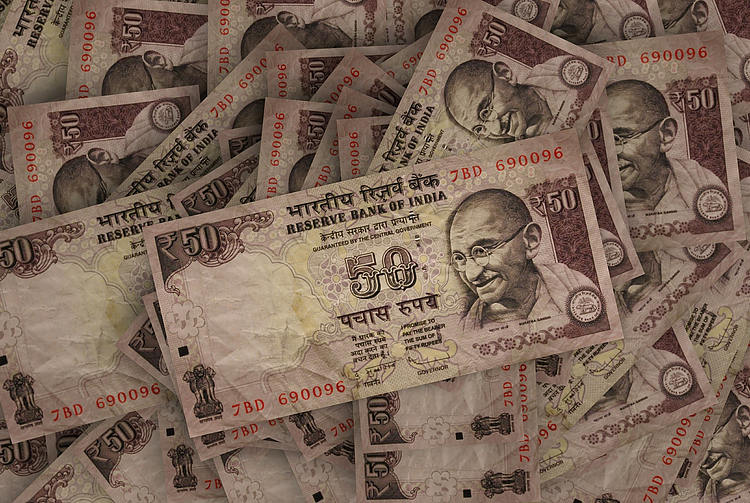- The Indian Rupee edges higher in Friday’s Asian session.
- Substantial equity outflows, higher crude oil prices might drag the INR down, but possible RBI intervention might cap its downside.
- Investors await the US housing data and FedSpeaks later on Friday.
The Indian Rupee (INR) recovers on Friday on the modest decline of the US Dollar (USD). The upside of the local currency might be limited amid foreign fund outflows, a negative trend in domestic equities and the recent spike in crude oil prices. Additionally, the rising expectations the Federal Reserve (Fed) would cut rates less aggressively might strengthen the Greenback and weigh on the INR.
Nonetheless, the routine foreign exchange interventions by the Reserve Bank of India (RBI) through USD sales could help limit the INR’s losses. Looking ahead, the US Building Permits and Housing Starts are due later on Friday. The Fed’s Raphael Bostic, Neel Kashkari and Christopher Waller are scheduled to speak on the same day.
Daily Digest Market Movers: Indian Rupee rebounds, the potential upside seems limited
- The BSE Sensex dropped 494.75 points, or 0.61%, to end at 81,006.61, while the broader NSE Nifty index closed at 24,749.85, down 221.45 points, or 0.89% from its previous close.
- Foreign investors have sold $8 billion worth of domestic stocks over October so far, the highest monthly outflow in over four years.
- The US Retail Sales climbed by 0.4% MoM in September from a 0.1% rise in August, beating the estimations of 0.3%, the US Census Bureau showed Thursday. Retail sales excluding autos arrived at 0.5% MoM in September versus 0.2% prior (revised from 0.1%), stronger than the 0.1% expected.
- The US Initial Jobless Claims for the week ending October 11 rose to 241K. The figure came in below the market consensus and the previous week’s of 260K (revised from 258K).
- According to the CME FedWatch tool, traders have priced in a nearly 90.3% chance of a 25 basis points (bps) Fed rate cut in November.
Technical Analysis: USD/INR keeps the bullish vibe in the longer term
The Indian Rupee trades stronger on the day. According to the daily chart, the USD/INR pair maintains a constructive outlook as the price is well-supported above the ascending trend line and the key 100-day Exponential Moving Average (EMA). The path of least resistance is to the upside, as the 14-day Relative Strength Index (RSI) is located above the midline near 60.60, hinting that the uptrend is more likely to gain traction than the reverse.
The immediate resistance level for the pair emerges near the all-time high of 84.15. Further north, the next upside barrier is seen at 84.50, en route to the 85.00 psychological level.
On the flip side, a decisive break below the rising trend line could pave the way to 83.90, the low of October 10. The key contention level is located at 83.71, the 100-day EMA. The additional downside filter to watch is 83.00, representing the round mark and the low of May 24.
Indian Rupee FAQs
The Indian Rupee (INR) is one of the most sensitive currencies to external factors. The price of Crude Oil (the country is highly dependent on imported Oil), the value of the US Dollar – most trade is conducted in USD – and the level of foreign investment, are all influential. Direct intervention by the Reserve Bank of India (RBI) in FX markets to keep the exchange rate stable, as well as the level of interest rates set by the RBI, are further major influencing factors on the Rupee.
The Reserve Bank of India (RBI) actively intervenes in forex markets to maintain a stable exchange rate, to help facilitate trade. In addition, the RBI tries to maintain the inflation rate at its 4% target by adjusting interest rates. Higher interest rates usually strengthen the Rupee. This is due to the role of the ‘carry trade’ in which investors borrow in countries with lower interest rates so as to place their money in countries’ offering relatively higher interest rates and profit from the difference.
Macroeconomic factors that influence the value of the Rupee include inflation, interest rates, the economic growth rate (GDP), the balance of trade, and inflows from foreign investment. A higher growth rate can lead to more overseas investment, pushing up demand for the Rupee. A less negative balance of trade will eventually lead to a stronger Rupee. Higher interest rates, especially real rates (interest rates less inflation) are also positive for the Rupee. A risk-on environment can lead to greater inflows of Foreign Direct and Indirect Investment (FDI and FII), which also benefit the Rupee.
Higher inflation, particularly, if it is comparatively higher than India’s peers, is generally negative for the currency as it reflects devaluation through oversupply. Inflation also increases the cost of exports, leading to more Rupees being sold to purchase foreign imports, which is Rupee-negative. At the same time, higher inflation usually leads to the Reserve Bank of India (RBI) raising interest rates and this can be positive for the Rupee, due to increased demand from international investors. The opposite effect is true of lower inflation.
Read the full article here

